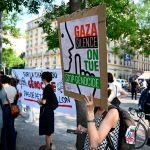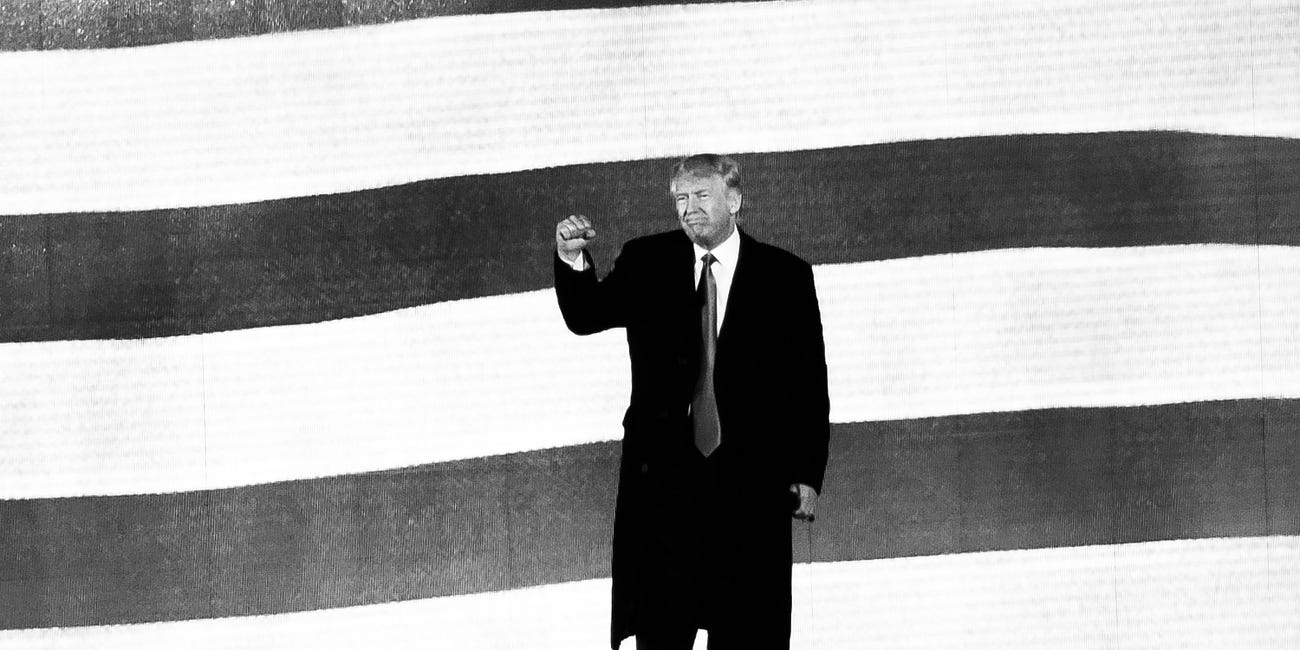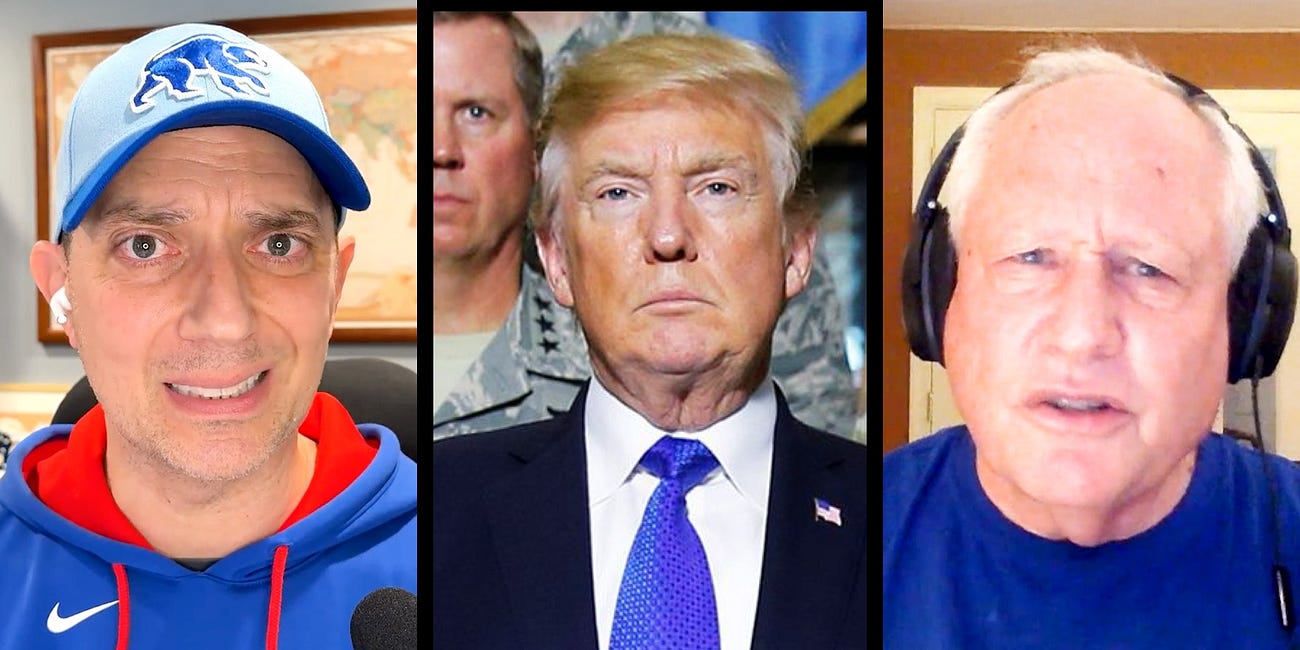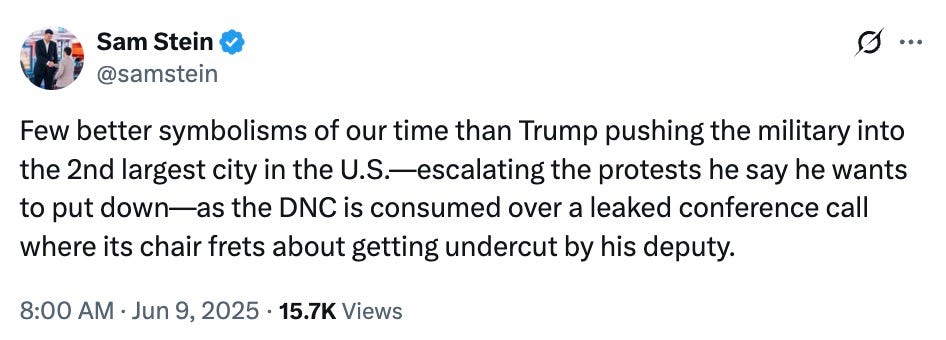
French Dockers Block Weapons to Israel
June 9, 2025
Alexa Avilés: “I Am Deeply Committed to the Working Class”
June 9, 2025U.S. and Chinese officials will meet today in London to give deescalation from the current trade war the old college try. This might have been more difficult before, when Trump’s saber-rattling was focused primarily on China. Now, however, the president is looking elsewhere, busy fantasizing about running over American protesters with tanks, so you never know—maybe they’ll have a breakthrough. Happy Monday.
by William Kristol
On January 1, 1863, the president of the United States, Abraham Lincoln, issued a proclamation ordering
that all persons held as slaves within said designated States, and parts of States, are, and henceforward shall be free; and that the Executive government of the United States, including the military and naval authorities thereof, will recognize and maintain the freedom of said persons.
This was the Emancipation Proclamation.
On Saturday evening, June 7, 2025, the president of the United States, Donald J. Trump, issued a presidential memorandum addressed to the secretary of defense, the attorney general, and the secretary of homeland security. One might call it the Usurpation Proclamation. And while this weekend’s mobilization of two thousand National Guard troops in Los Angeles has alarmed many observers, I suspect we aren’t alarmed enough by this presidential order, which has implications far beyond this one action in one place.
Let’s take a look at it. It consists of only three paragraphs.
In the first paragraph, the president asserts that “numerous incidents of violence and disorder have recently occurred and threaten to continue” in response to the execution of federal immigration laws. And, “To the extent that protests or acts of violence directly inhibit the execution of the laws, they constitute a form of rebellion against the authority of the Government of the United States.”
This claim of “rebellion against the authority of the Government of the United States” establishes the legal predicate for his action announced in the next paragraph:
In light of these incidents and credible threats of continued violence, by the authority vested in me as President by the Constitution and the laws of the United States of America, I hereby call into Federal service members and units of the National Guard under 10 U.S.C. 12406 to temporarily protect ICE and other United States Government personnel who are performing Federal functions, including the enforcement of Federal law, and to protect Federal property, at locations where protests against these functions are occurring or are likely to occur based on current threat assessments and planned operations.
If you look at 10 U.S.C. 12406, the authority Trump is invoking, it authorizes the president to call into federal service the National Guard when “the United States . . . is invaded or is in danger of invasion by a foreign nation, or when there is a rebellion or danger of a rebellion against the authority of the Government of the United States.” The president has claimed in the first paragraph that such a rebellion exists, and so directs the secretary of defense to mobilize at least 2,000 National Guard personnel for a duration of “60 days or at the discretion of the Secretary of Defense.”
And the president, in his proclamation, goes further than the deployment of the National Guard: “The Secretary of Defense may employ any other members of the regular Armed Forces as necessary to augment and support the protection of Federal functions and property in any number determined appropriate in his discretion.”
Note that neither Los Angeles nor the state of California is mentioned in the memorandum. Trump’s mobilization order is in no way limited as to time or place. It is an open-ended authorization for the secretary of defense to mobilize as many troops as he wishes for as long as he wishes, and to deploy them anywhere he wishes within the United States. And these military personnel can be deployed not just where protests have occurred, but anywhere protests “are likely to occur based on current threat assessments and planned operations.”
The memorandum’s final paragraph states that, “To carry out this mission, the deployed military personnel may perform those military protective activities that the Secretary of Defense determines are reasonably necessary” and ensures that the secretary of defense consults with the attorney general and the secretary of homeland security “prior to withdrawing any personnel from any location to which they are sent.”
Again: “Any personnel,” “any location,” and for any length of time.
Trump understands the breadth of his order. When asked by a reporter yesterday if he planned to send troops to Los Angeles, he answered: “We’re gonna have troops everywhere.”
Everywhere.
Trump and his apparatchiks may only lead us gradually down the slippery slope on which they have launched us. The normalization of the routine and open-ended deployment of the military at home requires that the public become accustomed to this departure from historic practice. But the departure has been announced. The Rubicon has been crossed.
Trump’s project may not go smoothly. There could be some pushback from the courts. But if the courts object to Trump’s use of 10 U.S.C. 12406 to end-run the Posse Comitatus Act—the 1878 law that limits the use of the military in civilian law enforcement—Trump has the even broader Insurrection Act of 1807 in reserve, ready to be invoked.
The institution that really could constrain the president is Congress, which could act legislatively and through appropriations to clarify limitations on the use of the military. But Congress is controlled by the Republican party. Let’s see how many Republican members of Congress are interested in such legislation. For now, at least, they’re more likely to cheer Trump on.
And then there’s the people. “Here the people rule,” the newly sworn-in Gerald Ford said in his first presidential address a half century ago, after another and lesser threat to the constitutional order had passed. So the people do. But do they care enough about our democracy to stand up against this usurpation?
I don’t know. I hope so. I fear not.
Last night, JVL offered his own set of thoughts on the happenings in LA in a must-read emergency Triad, putting Trump’s actions in the context of his apparent quick victory in his clash with Elon Musk and his forthcoming show-of-force military parade. It’s unlocked today for all readers: Don’t miss it.
The Triad
The Most Dangerous Week in American History (So Far)

I want to apologize if I sound hysterical. I do not mean to. More than that: I am trying, hard, to be measured. The problem is that this week is bringing us closer to the sum of all fears and when you simply describe what’s happening, out loud, it sounds crazy.
Bill and JVL also talked over Trump’s plot to expand executive power last night:
Bulwark+ Takes
The Crisis They Wanted

Bill Kristol and JVL discuss Trump’s latest moves to expand executive power, including deploying the National Guard, staging a military parade, and laying the groundwork for mass deportations.
THE HIGH ROAD: Over at the Atlantic, Conor Friedersdorf makes a case, well worth reading, for why opponents of Trump’s lawbreaking should “do everything they can to stay within the law”:
On X, many of his supporters are gleeful about the prospect of a clash that ends in bloodied leftists wearing handcuffs and facing felonies. Even setting aside the most negatively polarized segment of the Republican base, Trump has a strong incentive to redirect public attention away from his feud with Elon Musk, his underwater approval rating on the economy, and the fight over a spending bill that divides his coalition, and toward immigration enforcement, an issue on which his approval rating is still positive. What’s more, this clash concerns deportation actions that are apparently lawful, as opposed to Trump’s unconstitutional deportations of foreigners to a Salvadoran prison. . . .
Farsighted protest leaders should do everything in their power to keep those demonstrations law-abiding. Under the Trump administration, the rule of law is among the most precious safeguards Americans possess. Appealing to it, Trump critics have repeatedly prevailed in courtrooms, where Trump is least likely to succeed with his most dangerous gambits. In contrast, street violence gives Trump the ability to fight his enemies with the law on his side and with trained, armed personnel to enforce it.
Some out on the anarchic wing of the anti-Trump coalition roll their eyes at these sorts of better-angel appeals. This is insane on the merits, but we needn’t argue that point here. It should be sufficient to say: Maybe don’t protest the guy in exactly the way he’s hoping you will?
‘VERY SERIOUS CONSEQUENCES’: Perhaps we have bigger fish to fry, with troops rolling out to quell unrest on American soil. But it’s worth briefly dwelling on a quieter but still disquieting threat Trump issued over the weekend as well. In the wake of the collapse of his relationship with Elon Musk, NBC News asked the president what would happen if Musk opted to fund Democratic challengers for Republicans who support his massive budget bill. “He’ll have to pay the consequences for that,” Trump replied. “He’ll have to pay very serious consequences.”
What might these consequences be? Trump didn’t specify; he likely doesn’t even have specifics in mind. There’s plenty of time to think about how to crush Elon should he become a true adversary. In the meantime, it’s sufficient simply to make known that vague—but no doubt terrible—miseries will befall him if he pushes it. It’s the sort of thing that, if Joe Biden had said it, you’d hear conservative media repeating endlessly for a decade or more.
Musk seems to be getting the message. The world’s richest man clamped his mouth shut on any further anti-Trump rhetoric over the weekend, and—as rioting broke out in Los Angeles—even saw fit to share a pair of Trump’s Truth Social posts on X, blessing them with American-flag emojis.
DRONE SWARM: The fighting in Ukraine is escalating quickly, per Politico:
Kyiv said Russia unleashed its largest drone attack since 2022 in the early hours of Monday morning as President Vladimir Putin shows no sign of scaling back his all-out war on Ukraine.
Kremlin forces fired almost 500 drones at Ukraine and more than a dozen missiles, in a major attack targeting cities across the country, according to Ukrainian authorities.
Ukraine said its air defenses had shot down hundreds of drones and many missiles, and claimed that injuries were minimal.
“Russia is escalating the war and has no intention of stopping it,” said Andriy Yermak, top adviser to Ukrainian President Volodymyr Zelensky.
Trump has not posted about Russia or Ukraine since last Wednesday, shortly after he spoke by phone with Putin. In that post, he acknowledged that Putin would “have to respond” to Ukraine’s “recent attack on the airfields.” Some peace process this is shaping up to be.

Great Job William Kristol & the Team @ The Bulwark Source link for sharing this story.







